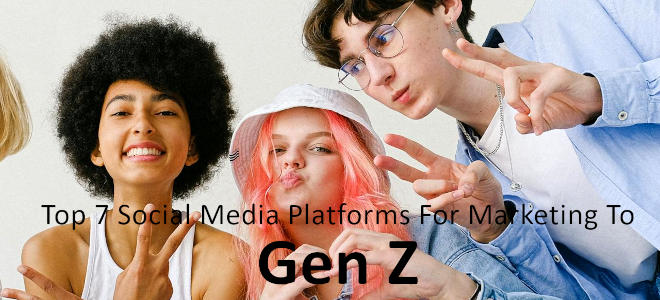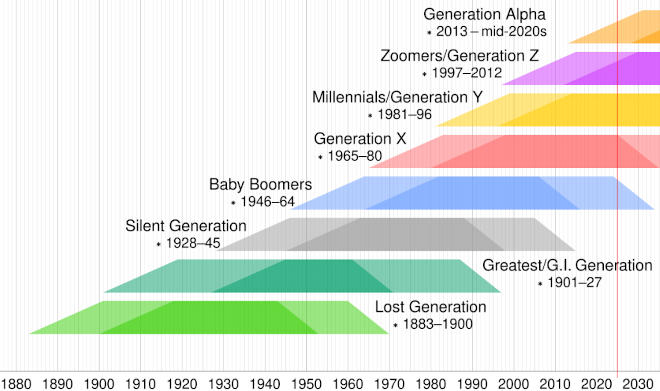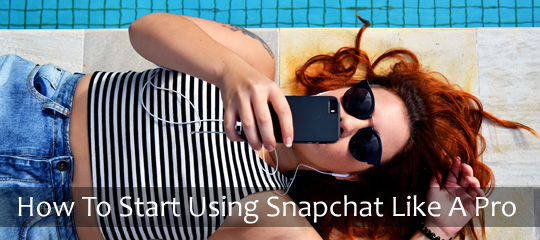Social Media is a natural habitat for Gen Z, the first generation born into the digital age.
According to recent research by the market research agency Opeepl, 81% of 15- to 27-year-olds have recently used social media. Generation Z, also called Zoomers (born 1997-2012) spends a significant amount of time on social media, averaging over 3 hours daily (3.27 h).
Additionally, 37% of Gen Z acknowledges that they spend more than 4 hours a day on social media.
Social media influencers also have a big impact on Gen Z consumers. Almost half (45%) of 15- to 27-year-olds say that they bought a product based on influencer recommendations, and 19% trust influencer recommendations more than traditional advertisements.
No doubt, social media is a go-to channel for brands that want to connect to and market effectively to Gen Z. But which platforms are the most effective at reaching and targeting young consumers?
Let’s explore the most popular social media platforms among Gen Z today, as revealed by the research.
1. YouTube
YouTube has the highest penetration among Gen Z, with 78% reporting that they have used the platform recently (79% of females and 78% of males). On average, 15- to 27-year-olds spend 1.93 hours per day on YouTube, making it one of the top social media platforms among this generation. Offering a wide range of content – from educational videos and tutorials to music and entertainment – Youtube keeps its popularity among versatile youth audiences.
Another factor is YouTube’s success is its creator business model, with millions of content creators crafting their content to interests of different niches. Authentic and relatable YouTubers give Gen Z consumers a feeling of connection and resonate strongly with the values of this generation. The interactive features such as comments, community posts, and live streams further foster this sense of connection for young social media users.
For brands, YouTube offers vast opportunities to market to Gen Z. With a wide variety of ad formats available, the platform gives flexibility for marketers to create impactful campaigns. Furthermore, collaborations with influencers and creators enable brands to add a genuine touch when approaching specific youth segments.
2. Instagram
Following closely behind YouTube is Instagram, another key player in the Gen Z social media landscape. 76% of Gen Z report that they have used Instagram recently (80% of females and 73% of males), spending an average of 1.87 hours per day on the platform.
Instagram appeals to Gen Z through its visual-based content, creating broad opportunities for self-expression and creativity. A variety of features like Feed, Stories, and direct messaging, help Gen Z to stay connected with brands, influencers and friends, and create a sense of community that one can share their authentic lives with. The introduction of Reels on Instagram, which was inspired by TikTok’s success, has made the platform even more efficient at engaging 15- to 27-year-old users with short-form video content.
Instagram is a dynamic platform, offering marketers many ways to engage with Gen Z – from influencer partnerships and product launches to interactive polls and live sessions. Lifestyle, trends, and commerce seamlessly blend on Instagram, making it a powerful tool for brands who want to build authentic relationships with younger audiences.
3. TikTok
TikTok is the third most popular social media platform among Gen Z in terms of penetration, with 69% reporting having used the platform recently (77% of females and 61% of males). Despite falling behind YouTube and Instagram in overall usage, TikTok is the clear leader when it comes to time spent. With an average of 2.53 hours spent on TikTok every day, it surpasses every other platform in capturing the attention of Gen Z.
TikTok’s unique feature is its ability to provide an endless stream of engaging short-form videos, based on individual user preferences. Entertaining, educational, and relatable content keeps young consumers scrolling for extended periods of time, while interactive platform features (e.g., live streams, challenges, duets) encourage participation and create a sense of community.
TikTok’s dominance in Gen Z attention means it is a powerful tool for reaching this demographic. Its highly visual and creative nature enables brands to implement authentic and trend-driven marketing campaigns, e.g., based on influencer partnerships or user-generated content. TikTok continues to shape how 15- to 27-year-olds consume media and engage online, and remains an essential platform for building meaningful connections with this audience.
4. Snapchat
While Snapchat doesn’t lead in penetration or overall time spent, it has a distinct role in the Gen Z social media landscape. Snapchat offers young social media users a more intimate and casual form of communication via features like disappearing messages, private Stories, and Snap Maps.
43% of Gen Z consumers have used Snapchat recently (47% of females and 39% of males) and, on average, spend 1.63 hours per day on the platform. Snapchat allows 15- to 27-year-olds to have quick, personal interactions with close friends, while its augmented reality (AR) filters and lenses provide engaging tools for self-expression and creativity.
For brands, Snapchat presents unique opportunities to leverage the platform’s interactive and intimate nature and reach Gen Z through AR-based ads, sponsored filters, or innovative storytelling formats.
[See related article: How To Start Using Snapchat Like A Pro]
5. Pinterest
33% of Gen Z report that they have used Pinterest recently. However, it is important to note that while other platforms manage to attract both female and male Gen Z users, Pinterest seems to be much more appealing to young females – 53% of Gen Z females have used the platform recently, compared to 14% of young males. On average, Gen Z spends 0.88 hours per day on Pinterest.
Unlike other social media platforms, Pinterest focuses on interest-based content rather than social interactions. Users turn to the platform for fashion, beauty, DIY projects, or lifestyle inspiration, and content remains relevant for months rather than disappearing quickly.
Pinterest offers great opportunities for long-term Gen Z engagement for brands, especially those in the fashion, beauty, home decor, or wellness categories. Features like Shoppable Pins and Pinterest Shopping help brands seamlessly connect inspiration with purchasing, making it a valuable tool for reaching 15- to 27-year-old females.
6. X (Formerly Known as Twitter)
30% of Gen Z consumers have used X recently (30% of females and 32% of males), spending an average of 1.17 hours per day on the platform.
Even after its rebranding, X remains an important platform for Gen Z to follow real-time conversations, news, and trends. Short-form posts and hashtags make X ideal for keeping young users up-to-date with global events and personal interests. Dynamic features like polls and threads allow users to participate in discussions and connect with content, making it an appealing platform for younger audiences.
X remains valuable for brands aiming to reach and engage Gen Z. Marketers can use the platform to join timely conversations, leverage trending hashtags, or engage with influencers in an authentic way.
7. Facebook
Though less popular among Gen Z compared to other platforms, Facebook still plays a role in reaching this demographic. 29% of Gen Z used Facebook recently (31% of females and 28% of males), spending an average of 1.03 hours on the platform per day. While younger users are less active on Facebook, they engage in meaningful ways, e.g., by joining interest-based groups or following real-time conversations.
Facebook’s community-building features and targeting tools offer tailored advertising opportunities and allow brands to connect with specific Gen Z segments. Additionally, its integration with Instagram and other Meta platforms makes it easier to run cross-platform campaigns. For brands aiming for broad Gen Z engagement, Facebook is a valuable tool to support a multi-platform strategy.
Conclusion
Social Media, a digital playground for Generation Z, offers consumer brands vast opportunities to reach and influence this tech-savvy generation. Each platform brings its own set of features, and companies should understand these nuances to create tailored marketing strategies.
Engaging Gen Z effectively requires a multi-platform approach, so staying up-to-date with the latest Gen Z social media trends and preferences is essential for marketers who want to appeal to this dynamic audience.
[Recommended reading: Why Should You Use A TikTok Marketing Agency?]
[Image credits – Main Photo by Anna Shvets; Generations graphic by By Cmglee – Own work, CC BY-SA 4.0, Link: other images, videos, infographics or screen prints are from their respective websites and/or social platforms or articles]
Morten Korch-Haahr is a CEO and Co-Founder at Opeepl, a global market research agency providing Gen Z and youth insights. Morten is an entrepreneur passionate about helping consumer brands take the right decisions based on actionable insights.



